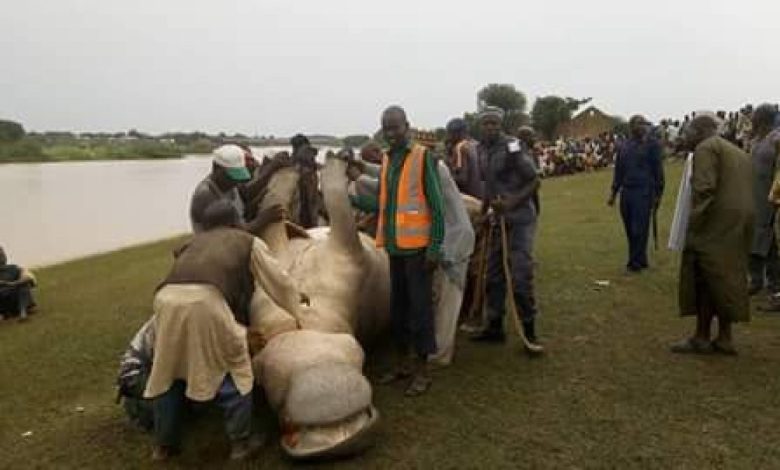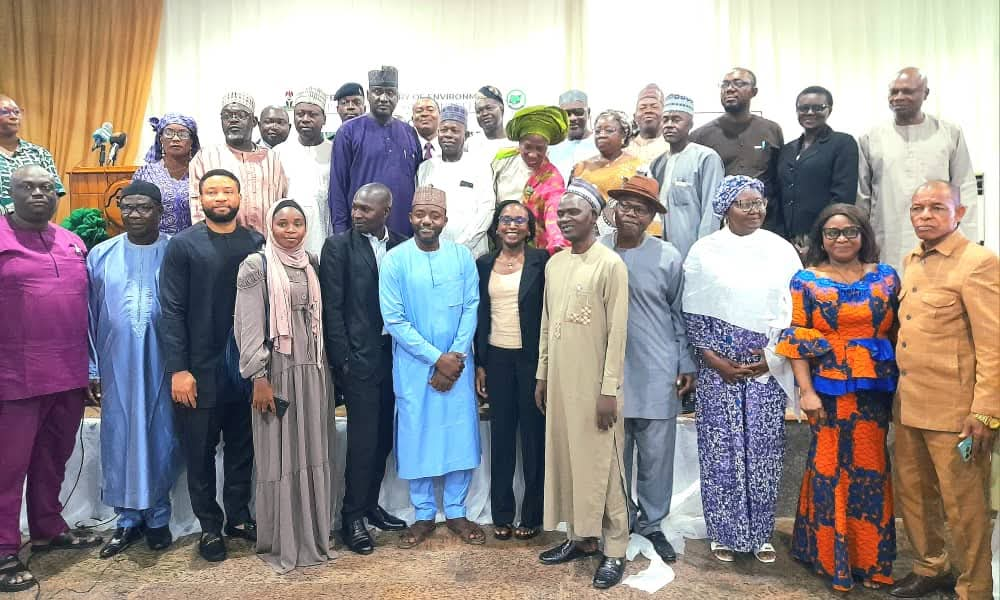

Nigeria has a high diversity of wildlife due to its position in the Guinean Forest of West Africa global biodiversity hotspot. This region supports many wildlife species found nowhere in the world. The landscapes of Nigeria consist of mountain highlands, tropical rainforests, savannahs, coastal and inland wetlands, marine, and estuaries supporting myriad wildlife species.
Of the three great apes of Africa, the Western gorilla and Chimpanzee occur in Nigeria. Not to talk of Elephants, Manatee, Sitatunga, Colobus monkeys, and many other wildlife species. The Cross River lowland rainforest contiguous with the Cameroon ecosystem has one of the most diverse groups of butterflies in the world. Wildlife contributes to functioning ecosystems, which we derive in the form of products and services.
For a very long time, people have interacted with wildlife in various ways. A great deal of the Nigerian population uses wildlife for consumptive values – food and medicine. About 90% of the rural population of Nigeria depends directly and indirectly on wildlife resources and their habitats.
Wildlife consumption from bush meat has been a critical source of protein and economic income sustaining the livelihood of many Nigerians. For many people, wildlife is valued for aesthetics among bird watchers, hikers, wildlife viewers, and photographers.
The educative value of wildlife is profound. It is said that “the human species emerged enacting, dreaming, and thinking animals and cannot be fully itself without them, and the human mind is the result of a long series of interactions with other animals – Paul Sheppard” People have been inspired by small and large animals.
Quite several wildlife species provide a special appeal and excitement to the observant human. Traditionally, many wildlife species are used for cultural festivals, demonstration of power, honor, or sacrifice.


While not many Nigerians have had the privilege to venture very far to the mountainous highlands of the Mambila and Obudu Plateaus to witness a first-hand experience of what a true wilderness looks like. Yet somehow they found the joy in the small critters like butterflies and birds around them.
Wildlife is a subject of economic, religious, and cultural significance in many Nigerian societies. Many birds like owls and Vultures constituted a few animals having many cultural values. Some wildlife species that we see today have been preserved through mutual coexistence between people and wildlife. In the same way, negative interactions between humans and wildlife have resulted in the decline and elimination of wildlife.
This is especially true for snake species, and pythons are widely killed for their meat and skin. Nonetheless, the preservation of some forests, important as wildlife habitats like the Osun-Osogbo Sacred Grove in Osun State is a typical example of these historical and cultural values.
The Tree of Life (Newbouldia laevis) and the Cola tree (Cola acuminata) have been used for Oba coronation in Benin Kingdom over centuries. Thus, helped preserved these wildlife and numerous others through these traditions.
In the northern parts, some communities have catch limits and hunting seasons in wetland habitats to avoid overexploitation of fishery resources, as in Dumbari, Yobe state.
The interaction between people and wildlife can be contentious. The population of many wildlife species has plummeted over the decades. Going back in time, species such as the Rhinoceros, African wild dog, Cheetah, Leopard, Caracal, Serval, Hyena, Lion, Eland, Buffalo, and numerous species of antelopes roamed Nigeria’s landscape, but they have been extirpated across their historic ranges. The skins of the Cheetah and Leopard in several museums across the country are a tribute to these majestic animals that many Nigerians have not had the chance to see.
During the 1930s, Nigeria was a hunting ground for large charismatic animals. James G. C. Allen reported the sightings of more than 50 Gorillas during his expedition on the Obudu, Ikom, and Mamfe of the Sankwala mountain ranges in 1930. While this largest primate on Earth still occurs in Nigeria, its sighting is extremely rare.


A very small number of Nigerians have ever seen the gorilla, maybe in captivity. What an exhilarating excitement to see the muffled drumming of a male gorilla! The country has hosted not only some of the most formidable local hunters like Ekenta who killed the last Elephant in the environment of Ozala Udi in Enugu in 1930, but also the world’s famous recreational hunters of the time. Not only in protected areas, but wildlife populations also abound across the landscape.
The areas around Ningi and the environment supported Lions, a variety of antelopes, and Elephant populations. This was evident elsewhere in the country as the first Lion in Audu Bako Zoological Garden in Kano state was sourced from the Hadejia-Nguru wetlands in the 1970s. But long were those days.
Lion populations are today extremely low and confined in the Yankari Game Reserve and Kainji Lake National Park. Theories about the number of Lions left in Nigeria are controversial, some conservationists claim there are fewer than 50 lions, but there could be 20 or so as suggested by others. An exact estimate could only be proved with detailed scientific studies and inventories.


Here are Cheetahs depicted on Nigeria postal stamps but long were those days when the animal roam the country as the fastest land animal in the world. To date, the skin of this animal can be observed in Yankari Game Reserve and Falgore National Park, and in other museums around the country.
The report had it that during the 1960s through the 70s, the population of the Black-crowned crane, which apparently is Nigeria’s national bird was very common and abundant and can be seen foraging in farmlands. However, the population of this bird that many people are hearing for the first time has vanished.
The Marabou stork, one of the largest flying birds in the world is another massive bird that has flown over much of Nigeria over the last past decades. The Vultures are another group of wildlife that have seen a precarious situation despite their long-term interaction with people in Nigeria.
The Hooded Vulture is the most abundant and common Vulture species in Africa. As narrated by Peter Mundy in his experience living in Sokoto in the 70s, the Hooded Vulture abounds the Sokoto town and as per as he knew at the time, the bird was not persecuted by people and in fact, lived and nested in houses, even in the Sultan of Sokoto’s residence.
In one instance, Mundy and his friend Allan counted 300 Vultures in Sokoto abattoir. Further to this practical experience, he narrated that “Every day, the market played host to anything up to 100 birds. They would dash between the tables for the bits of sinew and connective tissue thrown down by the butchers while cleaning the meat. Then the vultures would be almost between your feet like so many chickens” Imagine! Can you pause for a second and ask where to have all the Vultures gone?
How many times have you seen the Vultures flying around or perched on the roof of houses or abattoirs? Vultures play a vital role in the environment as natural cleaners by feeding on dead animals. As many readers will be aware, Vulture parts are heavily used for traditional medicines and superstitions.
Although this has continued unabated without any scientific evidence. As a result, many Vultures are facing complete disappearance in Nigeria and a considerable size of the Nigerian population has never seen Vultures in the wild, and would not, ever! If you interact with old folks, you will hear different precarious degrees of wildlife situations.
According to scientists, over 300 plants and animals are threatened with extinction in Nigeria. These are based on a conservative estimate of the species that have been assessed by the International Union for Conservation of Nature.
However, there could be more species facing extinction because the number of species that are awaiting assessment far outweighs the number of species assessed. Many widespread and common species could be already in a serious problem, if not facing local extinction since Nigeria does not have a national Redlist. But rely on the global conservative estimate of wildlife population and threat statuses.
I know at this point, you are eager to know how we arrive at this unprecedented wildlife loss, and a negative people-wildlife interaction. There have been important reasons that contributed to these situations over time.


During independence, Nigeria’s population was 33 million or so, as you read this, the population is over 200 million strong in just 63 years! Moving at this pace and projecting this into the future, the population will be close to 400 million in the current century.
Nigeria’s growing population was a formidable force behind the dramatic changes in the landscape and of course, in wildlife populations. The increasing human population translates to more mouths to feed, more space to live, and importantly, more land needs to be cultivated (wildlife habitat) to meet the food demand of the population.
From independence to date, Nigeria has brought over 40% of its area under agriculture, which exceeds the size of Ghana. This transformation occurred across all the different habitat types, critical for wildlife to survive. The forest cover, for example, decreased by 45% between 1975 to 2013 and the country has one of the highest deforestation rates in the world.
Before the Convention on International Trade in Endangered Species of Wild Fauna and Flora (CITES) issued the trade suspension of Rosewood (Pterocarpus erinaceus) from Nigeria in 2018, the country accounted for 60% of trade in this timber worldwide. This was a highly lucrative business involving hundreds of billions of naira.
Correspondingly, the loss of forests has accelerated wildlife habitat degradation and exposed the forest areas to other land use changes, which has caused a considerable change in the environment over the course of several decades.
Abubakar S. Ringim
[email protected]


